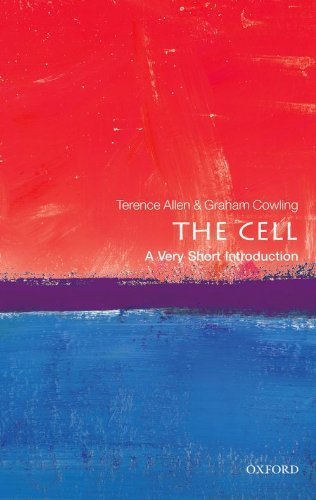What do you think?
Rate this book


Paperback
First published September 29, 2011
Although the nucleus might have been recognized by Antonie van Leeuwenhoek in the late 17th century, it was not until 1831 that it was reported as a specific structure in orchid epidermal cells by a Scottish botanist, Robert Brown (better known for recognizing ‘Brownian movement’ of pollen grains in water). In 1879, Walther Flemming observed that the nucleus broke down into small fragments at cell division, followed by re-formation of the fragments called chromosomes to make new nuclei in the daughter cells. It was not until 1902 that Walter Sutton and Theodor Boveri independently linked chromosomes directly to mammalian inheritance. Thomas Morgan’s work with fruit flies (Drosophila) at the start of the 20th century showed specific characters positioned along the length of the chromosomes, followed by the realization by Oswald Avery in 1944 that the genetic material was DNA. Some nine years later, James Watson and Francis Crick showed the structure of DNA to be a double helix, for which they shared the Nobel Prize in 1962 with Maurice Wilkins, whose laboratory had provided the evidence that led to the discovery. Rosalind Franklin, whose X-ray diffraction images of DNA from the Wilkins lab had been the key to DNA structure, died of cancer aged 37 in 1958, and Nobel Prizes are not awarded posthumously. Watson and Crick published the classic double helix model in 1953. The final piece in the jigsaw of DNA structure was produced by Watson with the realization that the pairing of the nucleotide bases, adenine with thymine and guanine with cytosine, not only provided the rungs holding the twisting ladder of DNA together, but also provided a code for accurate replication and a template for protein assembly. Crick continued to study and elucidate the base pairing required for coding proteins, and this led to the fundamental ‘dogma’ that ‘DNA makes RNA and RNA makes protein’. The discovery of DNA structure marked an enormous advance in biology, probably the most significant since Darwin’s publication of On the Origin of Species.
Now the entire genome has been sequenced, one might suspect that the chromosomes themselves might become less relevant because an individual’s DNA can be analysed, compared with normal, and problems diagnosed essentially by computer. It is worth pointing out that at the time of writing only seven individuals on the planet have had their DNA sequenced. These include Craig Venter, pioneer of DNA decoding, James Watson (fittingly), two Koreans, a Chinese, a Yoruban (a member of an ethnic group from Nigeria), and a leukaemia victim. The cost of sequencing the first human genome in 2003 was around $500 million, and the most recent nearer $250,000. For sequencing to be a feasible diagnostic routine, a cost of one thousand dollars is the target, which may be technologically feasible in the near future. However, the main barrier to the medical use of genomes is that diseases such as cancer, diabetes, or Alzheimer’s are invariably caused by many DNA variations, making it difficult to identify clear targets for either drug intervention or diagnostic indicators, and consequently limiting the idea of personalized medicine based on an individual genome—at least for the time being. Recently, the Wellcome Foundation have announced a project to sequence 1000 genomes, from a mixture of healthy people and those suffering from a variety of medical conditions, generating a statistically significant comparison.